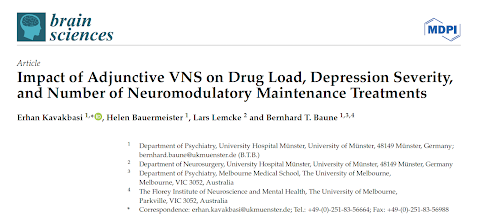JECT Review of ECT in Children and Adolescents From Denmark
Out on PubMed, from researchers in Denmark, is this review:
The abstract is copied below:
There is a lack of studies regarding the efficacy of electroconvulsive therapy (ECT) in children and adolescents. In this study, we aimed to assess benefits and harms of ECT in children and adolescents with major psychiatric diseases. We conducted a systematic search in PubMed, EMBASE, and PsycINFO for peer-reviewed articles written in English regarding the use of ECT as treatment for major psychiatric diseases in children and adolescents. This study consists of 192 articles, mostly case studies (n = 50), reviews and overview articles (n = 52), and retrospective studies (n = 30). We present an overview of evidence for ECT in children and adolescents with mood disorders, catatonia, schizophrenia, intellectual disability, self-injurious behavior, and other indications. This article is also a summary of international guidelines regarding the use of ECT in children and adolescents. We evaluated the overall quality of evidence by using Grading of Recommendations, Assessment, Development and Evaluations and found the overall level of evidence to be of low quality. There are no absolute contra indications for ECT in children and adolescents. Fears regarding cognitive dysfunction have not been reproduced in studies. Electroconvulsive therapy should be considered in severe, treatment-resistant mood disorders, catatonia, and schizophrenia, especially in older adolescents. High-quality studies are warranted to assess the efficacy of ECT, especially in these potentially life-threatening diseases.
Electroconvulsive Therapy in Children and Adolescents: A Systematic Review of Current Literature and Guidelines.
J ECT. 2021 Sep 1;37(3):158-170. doi: 10.1097/YCT.0000000000000761.
PMID: 34424874
The abstract is copied below:
There is a lack of studies regarding the efficacy of electroconvulsive therapy (ECT) in children and adolescents. In this study, we aimed to assess benefits and harms of ECT in children and adolescents with major psychiatric diseases. We conducted a systematic search in PubMed, EMBASE, and PsycINFO for peer-reviewed articles written in English regarding the use of ECT as treatment for major psychiatric diseases in children and adolescents. This study consists of 192 articles, mostly case studies (n = 50), reviews and overview articles (n = 52), and retrospective studies (n = 30). We present an overview of evidence for ECT in children and adolescents with mood disorders, catatonia, schizophrenia, intellectual disability, self-injurious behavior, and other indications. This article is also a summary of international guidelines regarding the use of ECT in children and adolescents. We evaluated the overall quality of evidence by using Grading of Recommendations, Assessment, Development and Evaluations and found the overall level of evidence to be of low quality. There are no absolute contra indications for ECT in children and adolescents. Fears regarding cognitive dysfunction have not been reproduced in studies. Electroconvulsive therapy should be considered in severe, treatment-resistant mood disorders, catatonia, and schizophrenia, especially in older adolescents. High-quality studies are warranted to assess the efficacy of ECT, especially in these potentially life-threatening diseases.
I was hopeful that this would be a definitive systematic review of the literature on ECT in children and adolescents. While it seems to comprehensively cover (with 190 references) the literature from 1996-2020 (Rey and Walter reviewed the earlier literature), there is little new analysis or synthesis here, there are editing and reference mistakes, and there is some conflation with the adult literature. Perhaps the explanation is that the authors are not ECT experts, and thus should be forgiven. They certainly worked very hard to produce the manuscript.
On a positive note, the information comparing treatment guidelines (see above) is useful and the topic of ECT in children and adolescents is so important that we should welcome any credible additions to the literature. I trust that child psychiatrists and any ECT practitioner with an interest in this topic will read the paper in full (~25 minutes). I would be interested in your additional comments.






Comments
Post a Comment